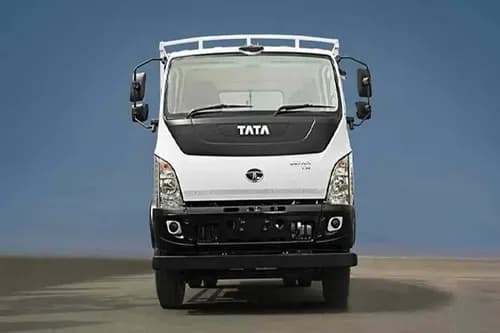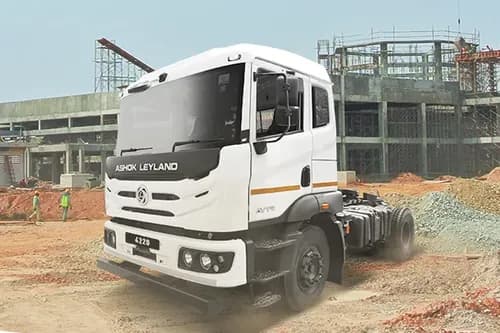Ad
Ad
Ad
How to Grow Radish in Cold Climates
Radishes are a great addition to any diet, and their health benefits make them a must-have for anyone looking to improve their overall health and well-being. In this article, we will discuss the benefits of radish and how to grow radish in winter.

Radish is a root vegetable that is widely used in salads and is known for its crisp texture and slightly spicy taste. Radishes come in a variety of shapes, sizes, and colours, including red, white, and black. They are low in calories and high in fibre, vitamins, and minerals, making them a healthy addition to any diet.
Radishes are a good source of potassium, vitamin C, and fibre and also contain antioxidants like catechin, pyrogallol, vanillic acid, and other phenolic compounds.
Radishes are also known to control damage to our red blood cells, and in the process also increase oxygen supply to the blood. If you eat radish as part of your daily salad intake, it provides your system with ample roughage and fibres, therefore improving your digestion. It also regulates bile production, safeguards your liver and the gall bladder, and is great for taking care of water retention.
In addition, radishes help to cleanse our liver and stomach, thus detoxifying it; black radish and its leaves have been used for the longest time to treat jaundice. And because of that particular property, it also helps to purify our blood.
Overall, radishes are a great addition to any diet, and their health benefits make them a must-have for anyone looking to improve their overall health and well-being. In this article, we will discuss the benefits of radish and how to grow radish in winter.
**Health Benefits of Radish
Hydration: Radishes have a high water content, contributing to hydration. Staying well-hydrated is vital for various bodily functions, including skin health and temperature regulation.
Digestive Health: The high fibre content in radishes promotes healthy digestion by preventing constipation and supporting regular bowel movements.
Immune Support: Vitamin C is essential for a robust immune system. Radish contribute to overall immune health, helping the body fight off infections and illnesses.
Heart Health: Potassium, present in radishes, is associated with maintaining healthy blood pressure levels, reducing the risk of cardiovascular issues.
Weight Loss: With minimal calories and a satisfying crunch, radishes make a nutritious and low-calorie addition to meals, supporting weight management goals.
Best Season To Grow Radish And Why
Radish is a cool-season crop, which means it thrives in spring and autumn. They’re great to sow as soon as the soil is workable, but when temperatures rise above 70°F (21°C).
In general, radishes can be sown in the garden in the early spring. Because they mature so quickly, plant them weekly (succession sow) to ensure you have an ongoing supply of radishes.
You can also plant them again toward the end of summer and early fall, at least four to six weeks before your first fall frost. Stop planting when spring temperatures reach 65 degrees, as they will bolt in the heat.
Radishes are often associated with the warmth of spring and summer, but with the right techniques, these can thrive in cold climates, offering a delightful addition to your winter garden. Cold weather not only sweetens the taste of radishes but also helps in preventing them from becoming excessively pungent. Here's a comprehensive guide on how to grow radishes successfully in colder temperatures.
Also Read: Cauliflower Farming: Cultivation, Planting & Harvesting
Step-By-Step Guide To Grow Radish in cold climates
Here is a step-by-step guide to growing radishes in cold climates:
Choose the right variety of radish
Some radish varieties are better suited for cold climates than others. For example, winter radish is typically larger and have tougher skin than spring and summer radishes. They are also typically less spicy than other types of radishes.
Choose radish varieties that are well-suited for cold weather. Winter radishes, such as Daikon and China Rose, are particularly resilient to low temperatures. Look for varieties with shorter maturity times, ensuring a timely harvest before the harshest winter conditions set in.
Plant radish seeds in the late fall or early winter
Radishes can be grown in cold climates as long as they are planted at the right time. Sow radish seeds directly in the garden bed or container about four to six weeks before the first expected frost.
Radish grow quickly and can be ready for harvest in as little as three weeks. Make successive plantings every two weeks for a continuous harvest throughout the winter.
Site Selection
Select a site that receives plenty of sunlight, as radishes thrive in full sun. Ensure that the soil is well-draining to prevent waterlogging, which can be detrimental to the roots. Excessively wet conditions can lead to rot.
In addition, radishes prefer light, sandy soils with pHs ranging from 6.5 to 7.0, but they will tolerate any soil type.
Soil Preparation for Radish Farming
Radishes prefer loose, well-draining soil with a slightly acidic to neutral pH. Work organic matter, such as compost, into the soil to enhance fertility and structure. Additionally, raised beds can aid in soil drainage and warming.
Sow radish seeds at a depth of half an inch to an inch. Space them about one to two inches apart in rows, allowing sufficient room for the roots to develop. Proper spacing prevents overcrowding and promotes good air circulation, reducing the risk of diseases.
Protection Against Frost
If a severe frost is expected, consider covering your radish plants with row covers or cloths overnight. This simple precaution can safeguard the plants and extend the growing season.
Protect the radishes from cold temperatures: If you cover the radishes with a thick layer of leaves or straw in the late fall or early winter, they will thrive in cold climates.
Maintain consistent moisture levels in the soil, ensuring it remains evenly moist but not waterlogged. Watering in the morning allows excess moisture to evaporate during the day, minimizing the risk of frost damage at night.
Harvesting
Radishes are generally ready for harvest within 20 to 30 days. Check the size specified on the seed packet, and when they reach the appropriate diameter, gently pull them from the soil. Winter radishes can be stored for an extended period, providing a fresh supply during the colder months.
By following these steps, you can enjoy a bountiful harvest of radishes even in cold climates.
Key Considerations for Successful Radish Cultivation
- Soil Preparation: Ensure well-draining soil with organic matter to promote healthy root development.
- Sunlight: Radishes thrive in full sunlight, so choose a location with ample sunlight exposure.
- Successive Planting: To extend the harvest period, consider making successive plantings every two weeks.
Top 7 Radish Producing States In India
India is one of the largest producers of radish in the world, with an approximate production of 1.3 million. Here are the top 7 Radish production states In India:
Haryana
Haryana comes at first position in the list of Top 7 Radish Producing States In India, dedicating extensive land to radish cultivation. The state's commitment to agricultural practices and favourable climatic conditions contributes significantly to India's overall radish production.
West Bengal
West Bengal emerges as another key player in the list of Top 7 Radish Producing States In India. The state's farmers have turned radish cultivation into a profitable venture, making it a lucrative business.
Punjab
Punjab, known as the "Commercial Hub for Radish Farming," is a major contributor to radish cultivation. The state's fertile soil and favourable climate make it productive to grow a variety of vegetables, including radishes.
Assam
Assam is also among India's largest radish producers, boasting nutrient-rich soil and a diverse range of radish varieties. Different types of radish are cultivated in Assam.
Bihar
With a substantial population relying on radishes as part of their diet, Bihar's farmers have started radish cultivation to meet local demand.
Madhya Pradesh
Madhya Pradesh, known for its diverse agricultural practices, has a considerable number of farmers engaged in vegetable farming, with radishes playing a pivotal role.
Uttar Pradesh
Uttar Pradesh, one of the largest states in India, is a key player in radish cultivation.
Also Read: Winter Pearl Millet Cultivation: Best Practices and Benefits
Conclusion
Radish farming is an essential agricultural practice in India, with an approx production of 1.3 million tonnes. The top 7 states in India that produce radishes are Haryana, West Bengal, Punjab, Assam, Bihar, Madhya Pradesh, and Uttar Pradesh.
Radishes are a cool-season crop, which means they thrive in spring and autumn. Radishes are a good source of potassium, vitamin C, and fibre, which can help lower blood pressure and reduce the risk of cardiovascular diseases.
In conclusion, radish farming is a profitable business for farmers in India, and the health benefits of radishes make them a must-have for anyone looking to improve their overall health and well-being.
Features & Articles
Best Tips for Truck Maintenance for Winter
Winter weather has a significant impact on truck performance, from mechanical components to fuel efficiency and safety....
23-Oct-24 12:43 PM
Read Full NewsDiscover the Advantages of Greaves Electric 3-Wheelers in India
Explore the advantages of Greaves Electric 3-Wheelers in India, ideal for navigating urban and rural roads. Learn about their impressive performance, cost-efficiency, and...
18-Oct-24 12:49 PM
Read Full NewsWhy Cruise Control is a Must-Have Feature for Indian Trucks
A cruise control system is a feature in vehicles, designed to maintain a set speed without requiring constant acceleration from the driver. ...
16-Oct-24 12:51 PM
Read Full NewsHere’s Why You Should Buy Mahindra Zeo in India
Discover why the Mahindra Zeo is the perfect electric truck for last-mile deliveries in India, offering eco-friendly design, advanced features, and affordability....
08-Oct-24 12:15 PM
Read Full NewsEuler Storm EV LongRange200: India’s First ADAS-Equipped Electric LCVs
Discover the Euler Storm EV LongRange200, India’s first ADAS-equipped electric LCV, featuring a 1,250 kg payload and 200 km range at INR 12.99 lakh....
27-Sep-24 01:28 PM
Read Full NewsChallenges Faced by Truck Drivers in India
Discover the daily struggles of truck drivers in India, from rough roads to long hours. Learn about their challenges and the solutions needed for a better future....
26-Sep-24 12:21 PM
Read Full NewsAd
Ad
Registered Office Address
Delente Technologies Pvt. Ltd.
M3M Cosmopolitan, 12th Cosmopolitan,
Golf Course Ext Rd, Sector 66, Gurugram, Haryana
pincode - 122002
Join CMV360
Receive pricing updates, buying tips & more!
Follow Us
COMMERCIAL VEHICLE BUYING BECOMES EASY AT CMV360
CMV360 - is a leading commercial vehicle marketplace. We helps consumers to Buy, Finance, Insure and Service their commercial vehicles.
We bring great transparency on pricing, information and comparison of tractors, trucks, buses and three wheelers.

























